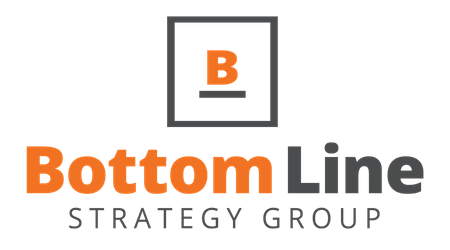Step-by-Step Implementation Guide of Digital Transformation
Implementation of digital transformation is akin to preparing for a long journey. It starts by assessing your readiness, much like checking the state of your vehicle and road map before hitting the road. This involves understanding your current business situation, evaluating your existing technology setup, and gauging employee openness towards change. It's not uncommon to find a few bumps in the road, but with the right tools - like McKinsey's Digital Quotient or Gartner's Digital Business Transformation Maturity Model - you can diagnose these early and plan accordingly. Here's where we take our first steps: assessing readiness for digital transformation.
Our comprehensive guide provides a structured approach to digital transformation, including steps such as identifying objectives, focusing on customer needs, establishing new processes, choosing technology wisely, restructuring to accommodate change, executing plans iteratively, and allowing space for agility. Each step is crucial for successful digital transformation and is supplemented with practical insights to help organizations navigate this journey effectively.

Author: William Flaiz
Assessing Readiness for Digital Transformation
Digital transformation involves a significant shift in how a business operates, making it critical to evaluate the current state of affairs before embarking on this journey. It not only encompasses the assessment of technological capabilities but also involves gauging the organization's culture and its ability to adapt to change.
So, where do we begin? One approach is to conduct surveys and interviews with employees at all levels within the organization. This provides valuable insight into their receptiveness to change and their comfort or discomfort with new technology. An alternative method involves analyzing existing systems and processes within the business to identify areas that may require improvement or modernization.
It's important to emphasize that successful digital transformation isn't just about adopting new technologies; it's equally about ensuring that your employees are ready, willing, and able to embrace these changes.
Imagine a scenario where a company invests in top-of-the-line software solutions, only to face resistance from its staff who are uneasy about using these new platforms. This resistance can significantly impede the effectiveness of any digital transformation initiative.
To aid in this assessment process, there are specialized tools available such as McKinsey's Digital Quotient and Gartner's Digital Business Transformation Maturity Model. These resources provide frameworks and metrics that can help you gauge your organization's readiness for digital transformation more objectively. They offer tangible criteria against which you can measure your current state and set benchmarks for improvement.
In essence, assessing readiness for digital transformation not only involves evaluating technological capabilities but also understanding the preparedness of your workforce to embrace change. By leveraging surveys, interviews, and purpose-built tools, businesses can gain comprehensive insights into their standing and effectively chart out their digital transformation strategy.
Upon understanding the importance of assessing readiness for digital transformation, the next natural step is devising the strategies for formulating a robust plan that incorporates these insights seamlessly into actionable steps.
Strategies for Formulating Digital Transformation Plan
When it comes to taking your business through a digital transformation, you need a solid plan. You can't just jump into it without knowing where you're headed. Let's break down some important strategies for crafting a successful digital transformation plan that aligns with your business goals and positions you for success.
Identifying Business Objectives
Your first step is to define clear and measurable objectives for the digital transformation. Think about what you want to achieve through this process. Are you aiming to improve customer experience, streamline operations, enhance innovation, or perhaps all of the above? By clearly defining your objectives, you will have a roadmap to guide your digital transformation initiatives and measure their success.
Conducting Market Research
After identifying your objectives, it's vital to gather insights into industry trends, customer preferences, and emerging technologies. This information will help inform and shape your digital transformation strategy. Understanding the market landscape and staying attuned to customer needs will enable you to make informed decisions and adopt technologies that align with your business goals.
Crafting a Roadmap
Once you have defined your business objectives and conducted thorough market research, it's time to develop a step-by-step plan for your digital transformation. This roadmap should detail the specific initiatives, timelines, and key performance indicators (KPIs) for tracking progress. By creating a well-defined plan, you provide clarity to everyone involved in the process and establish a structured approach toward achieving your digital transformation goals.
For instance, if one of your core objectives is to enhance innovation, a part of your roadmap may include integrating Artificial Intelligence (AI) or Machine Learning (ML) technologies into your business processes. Your timeline could outline a phased approach for implementing these technologies across different departments, while KPIs might measure factors such as increased efficiency or improved product development cycles.
Some may argue that setting these clear roadmaps can be restrictive as they limit the possibility of embracing unexpected opportunities. However, it's important to note that having a structured plan doesn't hinder flexibility; it simply provides a framework within which adaptability can thrive.
With a well-crafted digital transformation plan in place, businesses can navigate the complexities of technological integration and innovation with clear direction and purpose.
Resource Assignment and Project Management for Implementation
Understanding and strategically allocating resources is crucial in executing a successful digital transformation. Identifying the exact requirements and competently managing the associated talent, technology, and budget is paramount. A common pitfall occurs when an organization disproportionately distributes resources, leading to inefficiencies, delays, or even implementation failure.
The average time required for resource allocation is 3-6 weeks, highlighting the need for proactive planning and streamlined processes. Efficient resource allocation significantly affects project outcomes - 72% are completed within budget and 58% are delivered on time when managed effectively.
Selecting suitable project managers is equally decisive. These individuals serve as the linchpin in overseeing the smooth progression of initiatives. They must be adept at navigating challenges and orchestrating different teams towards a unified objective. It's vital to strike a balance between technical proficiency and robust leadership qualities while appointing project managers to ensure comprehensive supervision across departments.
Consider this scenario: A promising digital transformation project is underway, equipped with cutting-edge technology and ample resources. However, without a skilled project manager overseeing the process, the project could easily derail due to miscommunication, missed deadlines, or dissension among team members. The right choice of project manager can make or break the implementation phase, directly influencing its success.
Furthermore, implementing agile methodologies can prove instrumental in adaptability during the digital transformation journey. With an agile approach, teams can continuously grasp evolving requirements while maintaining flexibility in execution methodologies. This fosters an environment conducive to innovation and rapid response to change.
For instance, a company that adopts agile practices experiences frequent feedback loops that enable them to swiftly address any hitches during implementation. Embracing agility allows for continuous improvement without overwhelming change.
Incorporating modern project management software also plays a pivotal role in streamlining processes and fostering effective collaboration among teams. The adoption rate of project management software currently stands at an impressive 67%, underlining its significance as a facilitator of efficient resource utilization and streamlined progress monitoring.
The strategic allocation of resources, coupled with adept project management and adaptable methodologies, lays the cornerstone for successful implementation of digital transformation strategies.

Execution of Digital Transformation
Now that every aspect of your digital transformation plan has been carefully laid out, it's time to bring it all to life. The successful execution of a digital transformation initiative involves taking calculated steps to ensure seamless integration with existing systems, as well as empowering employees to adapt to new technologies.
Implement New Technologies
Once you've identified the technological tools and solutions required for your digital transformation, it's crucial to implement them in a way that ensures a smooth integration with your existing systems. This may involve introducing new software, hardware, digital tools, or even revamped processes in alignment with the formulated roadmap. As you implement these new technologies, it's important to regularly assess their performance and ensure that they are driving the intended outcomes.
For instance, if part of your strategy involves transitioning from manual data entry to an automated system, you'll need to carefully oversee the deployment of the new software and observe its impact on data accuracy and processing time. It's also essential to provide continuous support for users as they adapt to these new tools, ensuring that they are equipped with the necessary resources to leverage the technology effectively.
Train Employees
The success of any digital transformation heavily relies on how well employees can harness the newly introduced technologies. To facilitate this, comprehensive training programs should be put in place to equip employees with the essential skills and knowledge required for efficient usage of digital tools.
By providing targeted training sessions, workshops, and resources, employees can develop a deeper understanding of how to optimize these new technologies in their day-to-day operations. This proactive approach not only ensures a smoother transition but also empowers employees, alleviating potential resistance to change by promoting confidence in their ability to adapt.
Consider developing training modules tailored to different departments or job roles within your organization. For instance, if you're implementing a new customer relationship management (CRM) platform, sales teams might require specific training focused on leveraging customer data and insights, while customer service teams may need guidance on using the platform for issue resolution and communication. By customizing training programs to address specific job functions, you can enhance user proficiency and overall adoption.
Remember, the successful execution of digital transformation isn't just about adopting new technologies; it’s about enabling your team to utilize them effectively and efficiently. In doing so, you pave the way for sustainable growth, enhanced productivity, and a forward-thinking organizational culture.
Going beyond planning and execution lies another critical aspect of digital transformation—managing change and communication within an organization. Let's explore now how fostering effective change and communication strategies can drive successful initiatives in this transformative journey.
Managing Change and Communication in Digital Transformation
Change is often a daunting concept for many people in the workplace. It can induce anxiety, uncertainty, and at times, resistance. As an organization embarks on a digital transformation journey, it is pivotal to acknowledge these apprehensions and effectively manage the changes being implemented.
To address this, the development of a change management plan becomes indispensable. This plan should not only focus on the technical aspects of implementing new digital processes but also pay attention to the human side of transformation. It should outline strategies to address employee concerns, minimize resistance, and facilitate a smooth transition to the new digital processes.
Consider organizing workshops or training sessions to provide employees with a clear understanding of how the digital tools will improve their work processes and outcomes. This boosts confidence and alleviates fears about job security, ensuring that employees feel engaged and motivated during the transition phase.
Now, let's shift our focus to effective communication.
Effective Communication in Digital Transformation
Clear and consistent communication is crucial in guiding an effective digital transformation initiative. Employees need to be informed about the updates, milestones, and benefits associated with this change in order to align their efforts with the organization's objectives.
Establishing transparent channels for communicating digital transformation updates is key. This includes cascading information through various mediums such as company-wide meetings, newsletters, and digital platforms accessible to all stakeholders within the organization.
For instance, using an interactive intranet platform where employees can easily access information about digital initiatives can foster a sense of inclusivity and involvement. Additionally, creating dedicated forums or feedback channels provides employees with the opportunity to voice their concerns and offer inputs throughout the transformation process.
Using Technology Effectively in Digital Transformation
Technology is at the core of digital transformation. Utilizing analytics and automation can profoundly impact how businesses function and make decisions. Let's delve into the key aspects of using technology effectively in digital transformation.
Leveraging Analytics
Employing data analytics is like turning on a bright light in a dark room—it illuminates your path forward. With advanced analytics tools, businesses can gain valuable insights into customer behavior, operational efficiency, and market trends. By analyzing a wide array of data points, such as customer preferences, purchase patterns, and feedback, companies can make informed decisions that drive growth and improve customer satisfaction.
For instance, a retail company can use analytics to understand which products are selling well and in what regions, helping them optimize their inventory and marketing strategies. Similarly, a service-oriented business can analyze customer feedback to improve their offerings, leading to more satisfied clients.
Automation and Integration
Automation is the secret sauce that can transform labor-intensive processes into seamless, efficient operations. By implementing automation tools, businesses can streamline repetitive tasks, reduce human error, and free up employees to focus on more strategic activities.
Some may argue that automation could lead to job loss or reduced human touch. However, the goal of automation in digital transformation is not to replace humans but to empower them by removing mundane tasks and enabling them to utilize their skills for higher-value work. Integration is also crucial. Disparate systems often hinder smooth data flow and process efficiency within an organization. By integrating these systems, businesses can ensure that data seamlessly travels across different departments and functions, promoting a cohesive approach to decision-making.
Incorporating analytics and automation not only enhances productivity but also enables businesses to make better-informed decisions swiftly. These tools act as guiding lights, illuminating pathways for growth and success in the digital age.
With an understanding of how technology shapes the landscape of digital transformation, it's essential to monitor progress and ensure success in this dynamic environment.
Monitoring Progress and Ensuring Success in Digital Transformation
Digital transformation is a comprehensive, ongoing process that demands constant attention and refinement. To ensure success, it's crucial to establish and track Key Performance Indicators (KPIs) to measure the impact of digital transformation on various aspects of your business.
KPIs provide valuable insights into the effectiveness of your digital transformation efforts. They can range from metrics that measure customer satisfaction, operational efficiency, to the overall business performance. By setting clear KPIs, you're able to pinpoint where the transformation is driving positive change and where adjustments may be needed. For instance, customer-focused KPIs like Customer Effort Score (CES), Customer Satisfaction (CSAT), and Net Promoter Score (NPS) provide invaluable feedback on how well your digital initiatives are meeting customer needs and expectations.
Beyond establishing KPIs, it's essential to cultivate a culture of continuous improvement within your organization. This involves actively gathering feedback, analyzing results, and making iterative adjustments to the digital transformation strategy based on those insights.
Continuous improvement is not just about making occasional tweaks; it's about fostering a mindset that embraces change as a natural part of the digital transformation journey. It empowers teams to collaborate, innovate, and adapt to evolving business landscapes. For example, learning and development KPIs such as adoption rate and daily/monthly active users help gauge how well employees are embracing digital tools. By encouraging ongoing feedback loops and knowledge sharing, organizations can identify pain points early and swiftly address them, leading to more seamless adoption of new digital technologies.
In addition to tracking KPIs and fostering a culture of continuous improvement, consider using platforms such as Kissflow for your digital transformation initiative. Kissflow is a low-code platform equipped with built-in analytics and reporting features that can empower your organization by providing real-time insights into performance metrics. This allows you to gain deeper visibility into the impact of your digital efforts and make data-driven decisions for continuous enhancement.
By carefully monitoring KPIs and nurturing a culture of continuous improvement while leveraging purpose-built platforms like Kissflow, you can proactively steer your digital transformation journey towards long-term success and sustainable growth.
In this rapidly advancing digital landscape, proactive monitoring and a culture of continuous adaptation are the cornerstones of a successful digital transformation endeavor. Remember, the journey is ongoing—embrace change and innovation as allies in your pursuit of lasting business evolution.

© 2024 Bottom Line Strategy Group
All Rights Reserved | Privacy Policy





